Church of Light, Osaka, Japan by Tadao Ando (1989)
The space of the chapel is defined by light, by the strong contrast between light and shade. In the chapel light enters from behind the altar, from a cruciform cut in the concrete wall that extends vertically from floor to ceiling and horizontally from wall to wall, aligning perfectly with the joints in the concrete. From this cruciform shape an abstract and universal light seems to be floating on the concrete wall, its rays extending and receding over time with the movement of the sun.
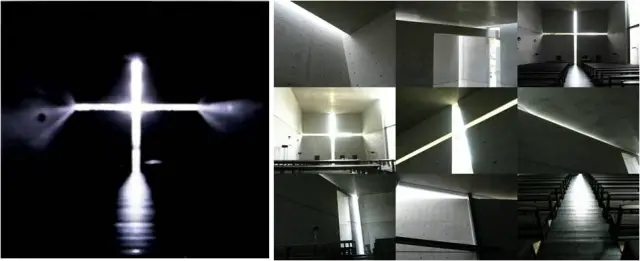
Light is also permitted to seep into the interior from the slicing of the volume by the freestanding concrete wall. The darkness of the chapel is further accentuated by the dark and rough-textured wood of the floor planks and the pews which are built out of reused wood used during construction as scaffolding.
Ronchamp Chapel, Notre Dame Du Haut by Le Corbusier
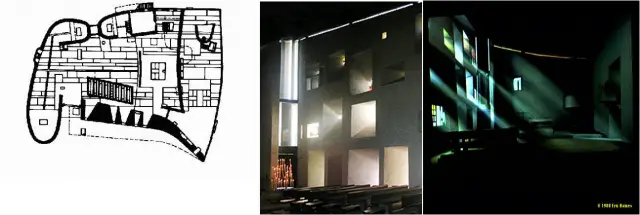
The thick, curved walls – especially the buttress-shaped south wall – and the vast shell of the concrete roof give the building a massive, sculptural form. Small, brightly painted and apparently irregular windows punched in these thick walls give a dim but exciting light within the cool building, enhanced by further indirect light coming down the three light towers
City of Arts and Sciences, Valencia by Santiago Calatrava
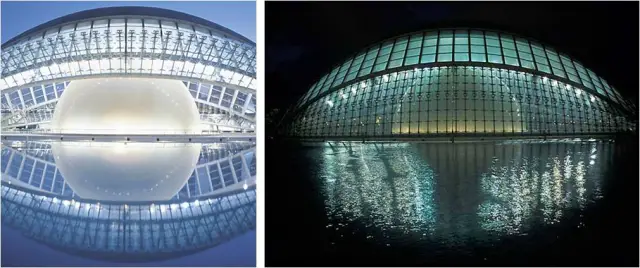
“As the site is close to the sea, and Valencia is so dry, I decided to make water a major element for the whole site using it as a mirror using light for the architecture.”
– Santiago Calatrava
Light acts as the key element in reflecting the concept and ethos of the building as well as the architect.
Reichstag Dome, Berlin, Germany by Norman Foster.
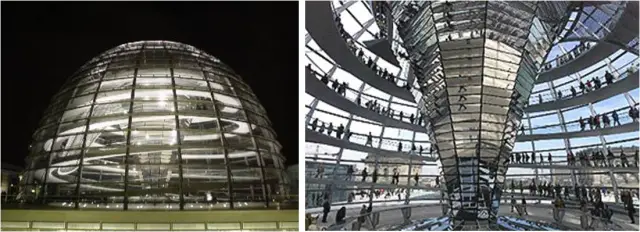
The dome is much celebrated and one of the primary tourist attractions of Berlin. A glass panel in the dome allows visitors to view down into the parliamentary chamber beneath. Much larger than expected, the dome provides great views of the city. Its two spiraling ramps leading visitors to the top provide changing vistas and lighting within the dome itself.
This ambience is at its height during the night reflecting nightscape of the city.
Entrance to a subway, Bilbao, Spain by Norman Foster
![[filefield-description]](https://www.archinomy.com/wp-content/uploads/case-studies/2011/subway-entrance-bilbao-spain.jpg)
The curved glassy structures – or “Fosteritos” – that announce the Bilbao Metro network at street level are as unique to Bilbao as the Art Nouveau Metro entrances are to Paris. Their shape is evocative of inclined movement, generated by the profile of the tunnels themselves. They admit natural light by day, and are illuminated at night, forming welcoming beacons in the streetscape
Bergisel Ski Jump, Innsbruck, Austria by Zaha Hadid
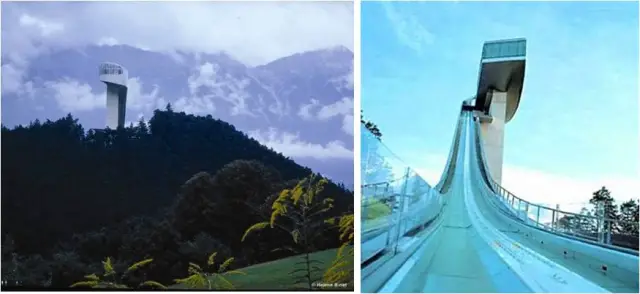
Situated on the Bergisel Mountain overlooking downtown Innsbruck, the ski jump will be a major landmark.
The beauty of the landmark is exemplified during night with light glowing its café and viewing terrace overlooking downtown Innsbruck from a height of 50mt from the peak of the mountain.
Eiffel Tower, Paris, France by Gustave Eiffel

“…The tower was the greatest affront not only to the architecture of Paris, but also to the eye of the Parisian, for whom its structural logic and revolutionary aesthetic language were incomprehensible.
With great lighting techniques, structures like Eiffel tower serve as iconic figure for the city.”

Leave a Reply
You must be logged in to post a comment.